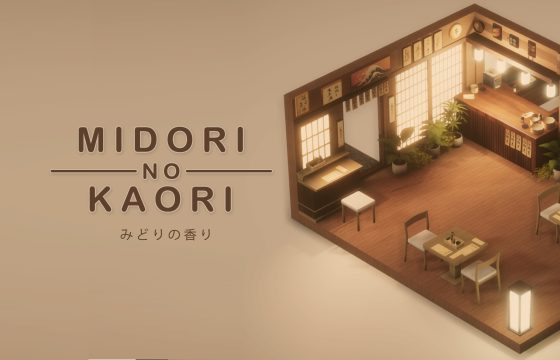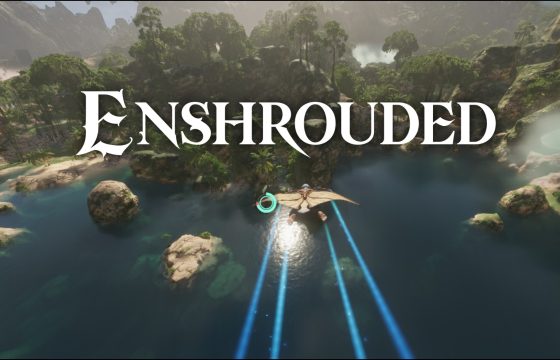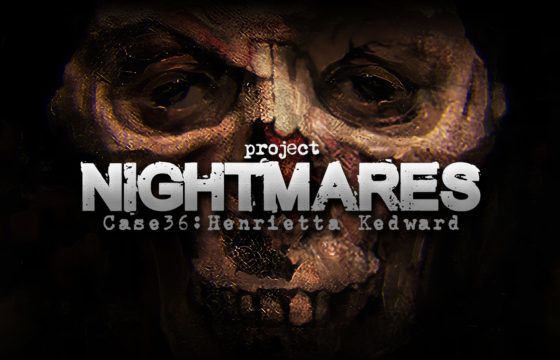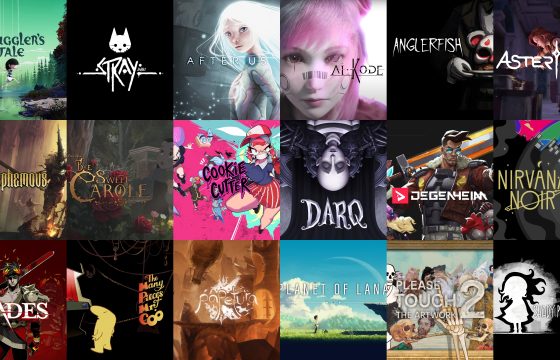We played the prologue of Fallen Tear: The Ascension, the promising fantasy Metroidvania from the Philippines-based studio Winter Crew, and we were thoroughly impressed!

For several months now, we have been closely following Fallen Tear: The Ascension, the promising and captivating new project developed by the independent, Philippines-based studio Winter Crew, and we believe it’s the right time to talk about it.
For those who are unfamiliar, Fallen Tear is a story-rich, hand-drawn fantasy Metroidvania set in the heart of Raoah, a magical world teeming with extraordinary landscapes and timeless natural wonders. Peace, stability, and balance have long reigned in this realm until a tragedy, a dark seed of suffering, disrupted the peace, spreading madness, war, and destruction.
With the world on the brink of destruction, Raoah’s last hope to restore the broken balance lies in an unknown figure, a mysterious boy named Hira, the protagonist of our story. Behind his simple attire, Hira hides a legendary heritage, making him the only one capable of saving Raoah from its grim fate.
Thanks to the kind permission of Winter Crew, we were able to play the prologue of Fallen Tear: The Ascension, and we are now ready to share our thoughts. But first, let’s provide some context. Before diving into our analysis of the prologue, allow us to say a few words about Winter Crew, the talented creators behind this promising project.
The story of Winter Crew
«As storytellers and players who love the video game medium and its community, they hope to engage, inspire, and create memories for players that will last a lifetime.»
Founded in 2020 in Malate, the lively and bustling district of Manila, the capital of the Philippines, by the Philippines-based parent company CMD Studios, Winter Crew is a passionate and talented collective of developers embarking on their first official project. Despite Fallen Tear: The Ascension being their debut video game as a team, many individuals within Winter Crew are not newcomers to the gaming industry. The team has a long history of developing games for international clients, ranging from AAA game studios to top-tier animation studios.
Essentially, they aren’t newcomers to the industry but rather a seasoned team of veterans who have already proven their experience, talent, and expertise in the gaming world. Therefore, it’s not surprising to witness the remarkable quality of animations and the outstanding art design showcased in Fallen Tear: The Ascension, their debut video game.
Now that we have finished the formalities and made all the necessary introductions, it’s time to share our experience with the game’s prologue!
Between Past, Present, and Future
The prologue, which lasts about 30 minutes – though the actual duration may vary depending on how much time you choose to spend, your pace of progression, and how many times you fall at the hands of your enemies – consists of two distinct phases: an initial dreamlike phase and a subsequent real one.
It is here, in this conflict between dream and nightmare, within a dark crystal cave, that we dive into the heart of the action. We take on the role of a formidable black beast with white spots, which we soon discover to be an alternate and extremely powerful form of the story’s hero, known as the Overgrowth—a special version of Hira that we’ll be able to unlock later in the game.

This is the first part of the prologue, where the Winter Crew team introduces us to the main game mechanics. These include some hints about the combat system and the first type of puzzle, which is easily solved by hitting a crystal to remove the barrier blocking access to the next area.
So far, so simple. To continue, you’ll need to defeat the enemies guarding the crystals, complete the second puzzle, and descend to the bottom of the cave. Here’s where you should be cautious. Without giving away spoilers, you’ll find yourself in a large room filled with golden statues, and you’ll have two choices: go right or go left. Go left first, as the area on the left can be missed. That’s all we can say without revealing too much.
Once the area is cleared, your only option is to descend into the void until you reach your first boss fight, which seems to be the guardian of the ruins: a skilled and powerful mage with effective teleportation and duplication abilities, and notably proficient with the spear. Whether you defeat her or not, the outcome will always be the same: you’ll perish at her hand, awakening from your dreamlike state.


It’s the big day, Hira
Just a bad dream? No, despite the first phase of the prologue appearing to be nothing more than a nightmare or a fleeting memory that will soon fade from Hira’s mind, the events experienced in this dream state are far from unreal. Instead, they foreshadow the future awaiting the protagonist, the chosen one who will save Raoah from corruption and eternal damnation.
Think of this nightmare as a premonitory dream, foretelling the imminent fate that awaits Hira. It is not merely a product of his imagination, or worse, a random sequence of fortuitous events, but a swift and specific succession of three different temporal sequences, indicating that destiny is unfolding more quickly than the protagonist can imagine.
Alright, enough reminiscing—let’s return to the present! This is where the second phase of the prologue begins, with Hira’s awakening. This phase is crucial, as it not only provides insights into the protagonist’s life and origins but also allows us to dive into the heart of the adventure, familiarize ourselves with the controls, and get a closer look at the strong JRPG essence at the core of the game.
We’re abruptly awakened by the voice of a mysterious hooded figure, whose features under the cloak and hood are unmistakable—it’s Runa, the Goddess of Time. However, we soon realize that the voice waking us up is actually that of our mother, Miah, reminding us that we’re running late—a classic, indeed.
And here, in our home at the foot of the beautiful town of Hill Crest, we encounter the first NPCs, Miah and Ravn, and delve into the protagonist’s past. As we briefly explore the house and examine the artifacts—simple mementos in the form of old photographs—we discover that Hira is actually an “orphan”, rescued and adopted by Miah when she discovered him as an infant, abandoned in an old temple to the Gods. However, Miah knew from the start that Hira was not just an ordinary foundling but a boy with great power. She dedicated her life to uncovering the truth about what happened to the Gods and what it means for Hira.


After concluding the dialogue with our mother, we step outside our home to finally meet our adoptive brother, Ravn, who awaits us for our initiation mission as hunters. It is at this moment that we notice an intriguing detail at the core of Fallen Tear: The Ascension’s lore—every NPC, even our main character Hira, possesses eyes that are completely void, entirely white, without iris or pupil. For now, it remains a total mystery, to which we cannot provide answers…
And it is after our brief chat with Ravn that the second part of the tutorial begins: our first mission, our initial assignment as aspiring hunters, leading us beyond the borders of Hill Crest towards the lush expanses of the Tranquil Woods for our very first boss fight.
A few simple rules to become a successful hunter
As we mentioned earlier, in the second part of the prologue, we’ll undertake our first hunt contract, which, if successfully completed, will grant us access to the Hunt Guild. It is in this section that we become acquainted with and can delve into some of the basic mechanics and get a glimpse of the extensive customization options that will allow players to make their playstyle unique.
Although the activities provided by the developers in the prologue are extremely limited, as is the norm, the freedom granted to players within the game world, you can freely explore the first mini-area and even return to it after the demo’s end credits if you wish to farm, power up, or further develop your first skill tree.

After visiting Myr, the blacksmith of Hill Crest, and obtaining our weapon, we can finally accept our first assignment and commence the hunt mission against the Apex Minikin, our initial target. As you may gather, missions not only hold crucial importance for the main quest, as they grant access to new areas, but they are also one of the simplest methods to acquire Fated Points, the resource allowing us to unlock new powers and access more powerful skill trees.
But what exactly are Fated Points? They are points that allow us to unlock and enhance Hira’s masteries, obtained through completing Fated Goals, specific activities such as exploration, castle tasks, and dedicated hunting missions. To acquire them, it’s not just about finishing the assignments; you must also redeem the points by selecting the assignment in the designated icon and marking it as completed. However, don’t worry; each time you achieve a Fated Goal, the game won’t forget. Instead, it will clearly remind you to redeem your Fated Points with an overlay graphic.
In the prologue, our access was restricted to a limited array of masteries, specifically the first tier, with some portions remaining locked. Furthermore, we were unable to uncover details about the other two branches of enhancement visible in the character menu: the ascensions and the hunter skills. Understandably, developers have kept information about these aspects undisclosed for now.


All the right ingredients for a great adventure are in place
Despite the understandably brief nature of the experience, Fallen Tear: The Ascension’s prologue serves as an excellent showcase for Winter Crew. It offers a glimpse into the expansive world of Raoah – featuring a total of 26 biomes – and showcases what appears to be a meticulously crafted product.
Naturally, passing judgment on a product after just 30 minutes of gameplay would be premature. However, we can share that there are many aspects we enjoyed, ranging from the seamless exploration, platforming, and fundamental combat mechanics to the excellent responsiveness of the controls and the protagonist’s actions. Both main areas of the prologue, Hill Crest and the Tranquil Woods, as well as the character upgrading system, left us with a positive impression.
We also particularly appreciated the various interaction opportunities that Winter Crew has integrated into the game world. In Fallen Tear, nearly everything is interactive, from simple objects to straw dummies, and even walls and surfaces that, while not destructible for obvious reasons, interact realistically with our cutting weapon. It’s a detail we appreciated and hope the team maintains and further diversifies in the other biomes, which could truly make a difference!
As for the story, we believe it’s fair not to pass judgment since the lore details aren’t sufficient for forming an opinion. Our hope is that, with the vast material at their disposal, the developers know how to manage the balance between main quests and side quests well, ensuring that the latter are engaging and avoiding repetitive or dull quests merely to extend playtime, especially for the many players who enjoy completing the game 100%. However, this isn’t the impression the game has given us, and we remain hopeful that the team can skillfully manage this balance.
We reaffirm our excellent impressions of the game’s art and hand-drawn animations, which continue to impress with their beauty and, to be frank, stand out as some of the most visually stunning in terms of both aesthetics and style. Special mention goes to the brief preview of the soundtrack, which will be composed entirely by Lukas Piel, adding a touch of magic to our experience with the prologue.
Overall, Winter Crew has truly crafted a commendable product that has impressed us, and if we may offer a suggestion, keep an eye on it, as you’ll be hearing much, much more about it very soon.
Fallen Tear: The Ascension currently does not have a release date. The game has been announced for PC, although the developers have admitted several times that they intend to expand the release to consoles.
Additionally, the developers have announced that soon, Fallen Tear: The Ascension will launch a crowdfunding campaign on Kickstarter. For further information on the campaign and to be the first to know when it launches, visit this link and click on the “notify me on launch” button.
For more information about the game, keep following us, and don’t forget to visit the game’s official website and the Steam page, where you can add Fallen Tear: The Ascension to your wishlist and play the free demo.
That’s all for today. See you in Raoah.










